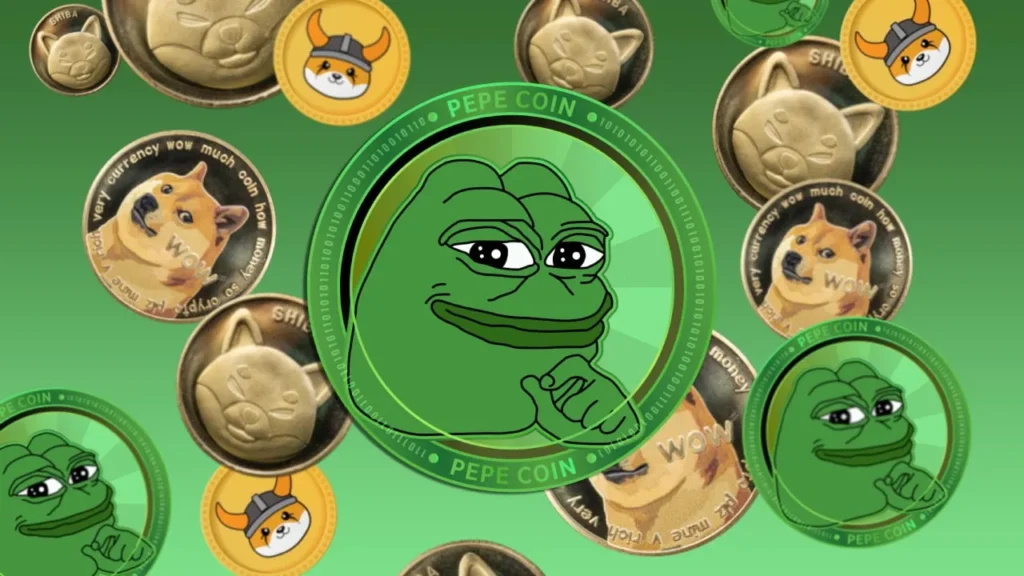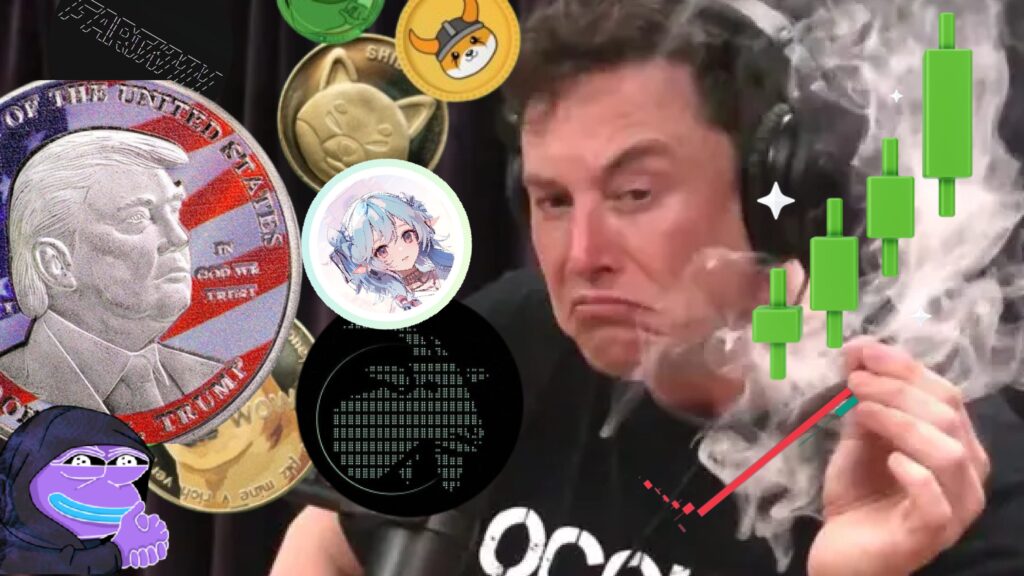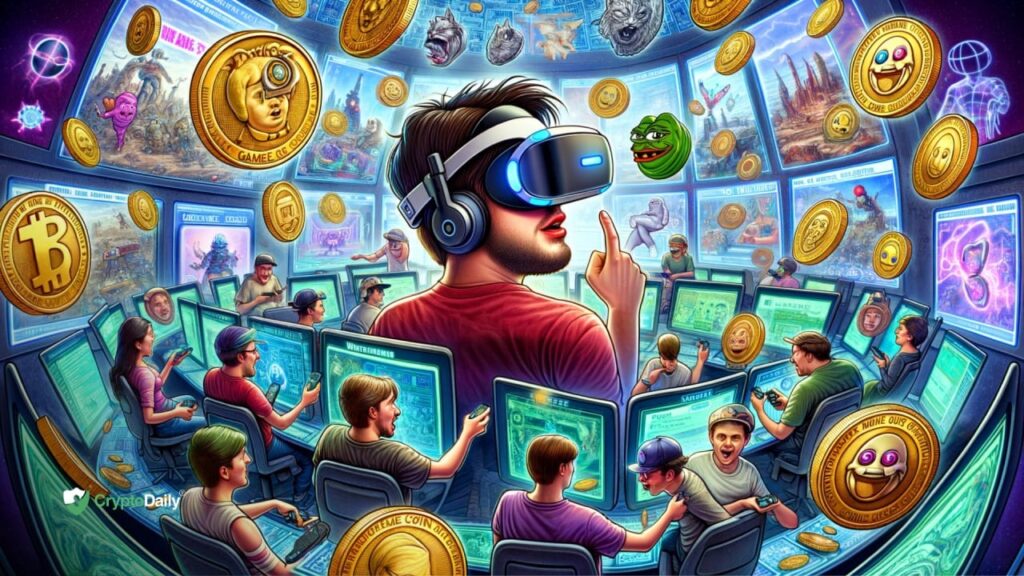The cryptocurrency market is often driven by more than just technical innovation or economic fundamentals. Over the past few years, we’ve witnessed the rise of meme tokens—cryptocurrencies inspired by internet culture, humor, or viral phenomena—that experience sudden and explosive growth despite lacking any inherent technological value or real-world utility. The most notable example, Dogecoin, was originally created as a joke but has since become a symbol of internet culture and, at times, one of the largest cryptocurrencies by market capitalization.
But what drives these meme token pumps? Is it just a trend, or is there something deeper at play in the minds of investors and the broader crypto community? In this post, we’ll explore the psychology behind meme token pumps, delving into how memes, social culture, and groupthink can turn a harmless internet joke into a multi-million-dollar phenomenon.
The Birth of Meme Tokens: Humor and Culture Collide

At their core, meme tokens often begin as a joke or a humorous response to the rapidly evolving cryptocurrency space. Dogecoin, for example, was launched in December 2013 by software engineers Billy Markus and Jackson Palmer as a fun parody of Bitcoin. The logo, featuring the Shiba Inu dog from the “Doge” meme, was a lighthearted nod to internet culture and had no real utility or promise of innovation in the crypto space.
But what started as a tongue-in-cheek creation quickly gained traction, largely because it captured the spirit of a rapidly growing online subculture. Memes, by nature, are designed to be shared quickly, with humor and absurdity often playing a key role in their viral spread. This unique combination of humor, culture, and cryptocurrency turned meme tokens into a fascinating phenomenon, not just in terms of market value but in how they represent a social movement of sorts.
The Power of Internet Culture: Meme Tokens as Cultural Symbols
The psychology of meme token pumps can be explained in part by the broader dynamics of internet culture. In today’s digital age, memes have become more than just entertainment—they are symbols of identity, community, and belonging. Memes capture the collective consciousness of internet users, often representing shared experiences, jokes, or societal trends.
When a meme token, like Dogecoin or Shiba Inu, gains popularity, it taps into an existing cultural movement. Investors and users of these tokens aren’t just buying into a cryptocurrency—they’re buying into a cultural symbol. They’re associating themselves with a community of like-minded individuals who share the same humor, values, and aesthetic. This sense of belonging plays a huge role in driving the demand for meme tokens, as it’s not only about financial gain but about being part of something larger.
For instance, during the 2021 Dogecoin rally, investors weren’t just motivated by the hope of making quick profits—they were fueled by a desire to be part of a growing cultural meme. Celebrities like Elon Musk, Mark Cuban, and Snoop Dogg openly supported Dogecoin, creating a sense of legitimacy and cultural relevance around the token.
The Role of Social Proof and Groupthink

One of the key psychological factors behind the surge in meme token prices is social proof. Social proof refers to the phenomenon where people tend to follow the actions of others, especially in uncertain situations. In the case of meme tokens, the more people see others investing in or talking about a particular coin, the more likely they are to jump on the bandwagon.
This is especially powerful in online communities. Platforms like Twitter, Reddit, and Discord provide a space for meme token communities to gather, share information, and hype each other up. Subreddits like r/Dogecoin and r/ShibaInu are full of active members who constantly discuss the future potential of these tokens, further driving the collective belief that these coins can rise in value.
The sense of belonging to a group amplifies the desire to conform and be part of something bigger than oneself. This is where groupthink comes into play—when a collective of people with similar ideas or goals starts influencing one another in a way that intensifies belief in a particular outcome. In the case of meme tokens, groupthink can create a feedback loop where the excitement and enthusiasm of one investor cause others to jump in, driving up demand and, consequently, the price.
FOMO (Fear of Missing Out): The Catalyst for Pumps
FOMO—the fear of missing out—is another psychological driver that plays a central role in meme token pumps. As meme tokens begin to gain momentum, those who aren’t involved yet might feel a sense of anxiety about missing a golden opportunity. FOMO taps into our deep-seated fear of regret, and it can encourage people to make impulsive decisions.
This is particularly true when a meme token experiences rapid price gains. When investors see others making significant profits, they feel compelled to join the fray, fearing that they’ll be left behind if they don’t act quickly. This sense of urgency can lead to a rush of new buyers, further fueling the price increase.
FOMO can be especially pronounced in meme tokens because they often lack the traditional metrics of valuation, such as a robust whitepaper, innovative technology, or a clear use case. In the case of meme coins like Doge, the hype is often driven purely by speculation, jokes, and viral internet trends. When investors buy into the token simply because they don’t want to miss out, it can cause massive volatility and unsustainable price increases.
The Role of Memes in Shaping Perception

One of the most interesting psychological elements of meme tokens is the power of memes themselves. A meme, by its nature, is a cultural artifact that’s designed to spread quickly, elicit an emotional reaction, and be easy to share. Memes have the power to shape how we view the world, and in the case of meme tokens, they can even influence how we perceive the value of a coin.
In the world of finance, value is typically derived from fundamentals—like utility, scarcity, or the underlying technology of a project. However, meme tokens often defy these traditional valuation methods. Instead, their value is largely driven by emotional appeal and the perception of their worth within the cultural ecosystem. As memes become a symbol of internet culture, their association with a token can become a self-reinforcing cycle—the more people talk about a meme token, the more the meme becomes entrenched as a cultural symbol, which increases its perceived value.
For example, Elon Musk’s tweets about Dogecoin have often acted as powerful memes in themselves. When Musk shares something humorous or supportive about Dogecoin, it’s not just a statement—it’s a meme. His influence as a cultural icon has turned Dogecoin into a token that transcends its basic utility. For Musk’s followers and meme enthusiasts, Dogecoin isn’t just a cryptocurrency; it’s a symbol of a specific type of digital rebellion and cultural expression.
The Risks of Meme Token Pumps
While meme tokens can offer thrilling short-term gains, they also carry significant risks. The psychology of hype, FOMO, and groupthink can lead to massive price volatility. Meme tokens often lack the solid fundamentals that would make them sustainable in the long term, and once the hype fades, the price can plummet just as quickly as it rose.
Investors looking to profit from meme token pumps should be aware of the potential for bubble-like behavior, where prices soar based on speculative demand rather than intrinsic value. Market manipulation and whale activity (large investors controlling a disproportionate amount of the token) can also exacerbate price swings, leaving smaller investors vulnerable.
Conclusion: The Lasting Appeal of Meme Tokens
Meme tokens represent a fascinating intersection of psychology, culture, and finance. They tap into our desire for belonging, humor, and the excitement of being part of something bigger than ourselves. The rapid rise (and sometimes fall) of meme tokens highlights the psychological power of internet culture, social proof, and groupthink in the digital age.
However, while meme tokens are undeniably fun and can lead to impressive profits for some, they also highlight the dangers of speculation and hype-driven investments. As meme tokens continue to make waves in the crypto market, it’s important to remember that cultural value and emotional appeal can only take a token so far. Investors should approach these tokens with caution, aware of the risks that come with putting money into something driven more by memes than by substantial underlying value.



Comments are closed